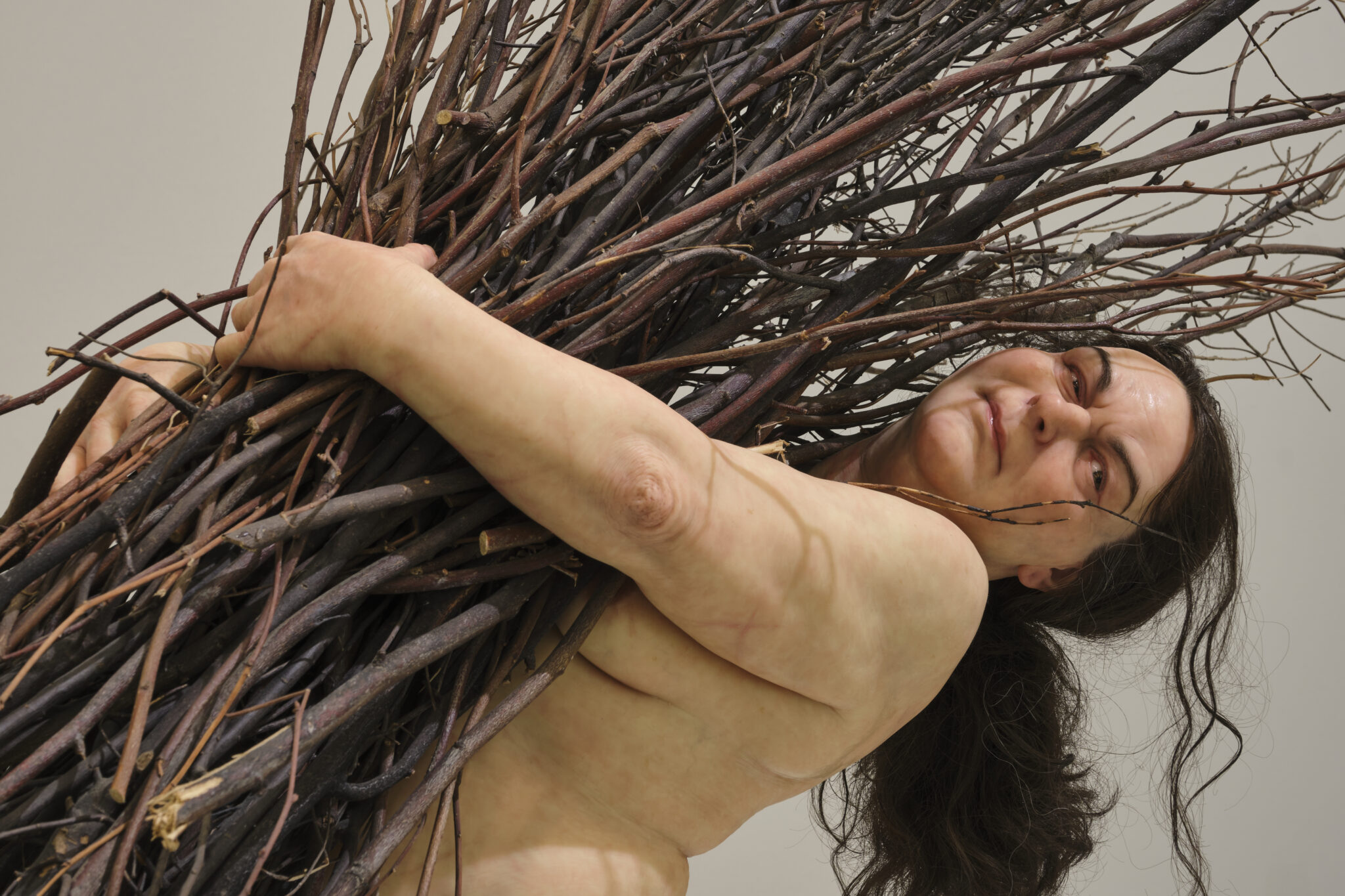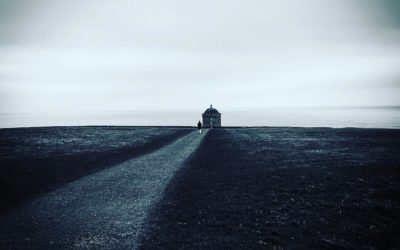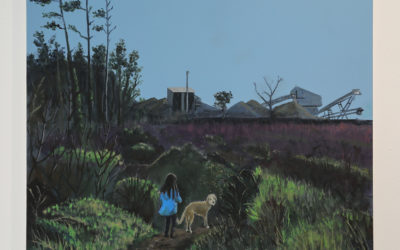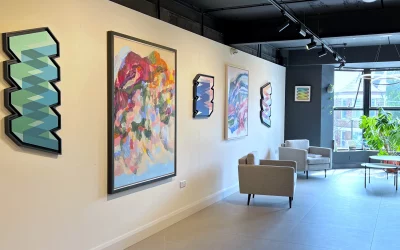First published in the VAN (Visual Artists News Sheet) 21 November 2022.
Viewing Ron Mueck’s current show at The MAC (29 July – 5 November) I find myself grasping for reference points. Firstly, from art history: from seventeenth-century Spanish polychrome sculpture to the mutated and mutilated figures of the Chapman brothers; and then beyond, from the ‘plastinated’ bodies of Gunther von Hagens to the latest humanoid robots paraded in science fairs. Even childhood visits to the National Wax Museum in Dublin come to mind. However, in terms of uncanny hyperrealism, nothing comes close to Mueck’s rendering of the human form in all its uncompromising detail.
Early in his career, Rodin was accused of ‘casting from life’ to create his life-sized figure, The Age of Bronze (1875). Similarly here, one wonders what sorcery is at play. Insights into the artist’s meticulous and laborious processes are provided via Gautier Deblonde’s photographs and a video of Mueck at work in his studio, that bookend this presentation of seven of the artist’s major works.
Youth (2009/11) is a diminutive, barefoot, black teenager in low-slung jeans and white t-shirt, which he lifts up to display a bloody stab-wound to his abdomen. The blood has spread, seeping through his raised garment. As he strains to see his exposed flesh below, his expression – mouth open, eyebrows raised – is less of horror than of incredulity; he is simultaneously Christ and Doubting Thomas. Again, I’m struck by the lack of reference points, such as the dearth of ethnic minorities represented in sculptural form in museums, galleries, and public sculpture. I’m also reminded of the spate of stabbing-related mortalities in London, which reached record heights in 2008, one year before the piece’s completion.
The first and most obvious reaction to the artwork in this extraordinary show is simply to marvel at their staggering verisimilitude and attention to detail. This draws you in and really cannot be overstated. Skin can be mottled and babylike, or scratched and weather-beaten; hair can be stubbled or wispy, limp or wiry. Some figures show traces of dirt in pores or under fingernails and toenails. In Mother and Child (2003), the even sheen of amniotic fluid that dribbles from a new-born and pools on its mother’s chest is subtly differentiated from the specks of perspiration on her brow, arising from the efforts of labour. This latter piece depicts the moment where a baby has been placed on the still-swollen belly of its naked mother, before the umbilical cord has been cut. It is usually represented, in film and television, as a moment of exasperated joy and relief. Here, however, the mother’s arms remain clamped to her sides, her expression inscrutable; is it bemused or sinister, melancholic, or simply exhausted? In any case, the usual cultural portrayal – itself unrealistic – has been subverted.
Woman with Shopping (2013) is the same ‘person’, now fully clothed and upright. Her arms are still pressed to her sides, this time weighed down with plastic shopping bags, filled with mundane grocery items. The baby still gazes upwards in the same position, this time harnessed inside her bulging overcoat. The woman is still the carer and the bearer, her hands still unable to cradle, her expression still enigmatic.
The second constant in Mueck’s work is his play with scale. His breakthrough piece, Dead Dad (1996-7), depicts the naked corpse of the artist’s own father, resting heavily on its greyish flesh. This sculpture is half life-size, while the reclining female figure of In Bed (2005) is a vast 6.5 metres in length. With Dead Dad, diminution bring pathos to a stark and clinical form, the bleakness of the subject matter ironically magnified. The emotional impact of enlargement however is harder to pinpoint beyond the initial sense of awe. For example, Dark Place (2018) is a 1.5-metre-tall, disembodied head, which verges on menacing. However, this could be due to its contrived setting in a black, narrow-apertured room and a single spotlight. The mountainous figure of In Bed, with knees raised, and one hand pressed to her cheek, is melancholy and lost in thought. Here the exaggerated scale suggests some monumental inner turmoil, as if she were incapable of leaving the bed, powerless to follow her far-off gaze.
With almost all of the figures in this show, including the fairy tale-like Woman with Sticks (2009), it is tempting –perhaps even inevitable – to attempt to read the expressions of the figures or to position oneself deliberately in their lines of sight. When I do so, there are flickering moments where I feel I’m the one being observed. An invigilator recounts the different reactions to Dead Dad – from the tittering of children to a woman who immediately burst into tears. I witness a group expressing a desire to bundle the new-born baby up in their arms. It would seem that this human impulse to imagine narratives says as much about us as viewers as about the works themselves.
Jonathan Brennan is a multidisciplinary artist based in Belfast.




